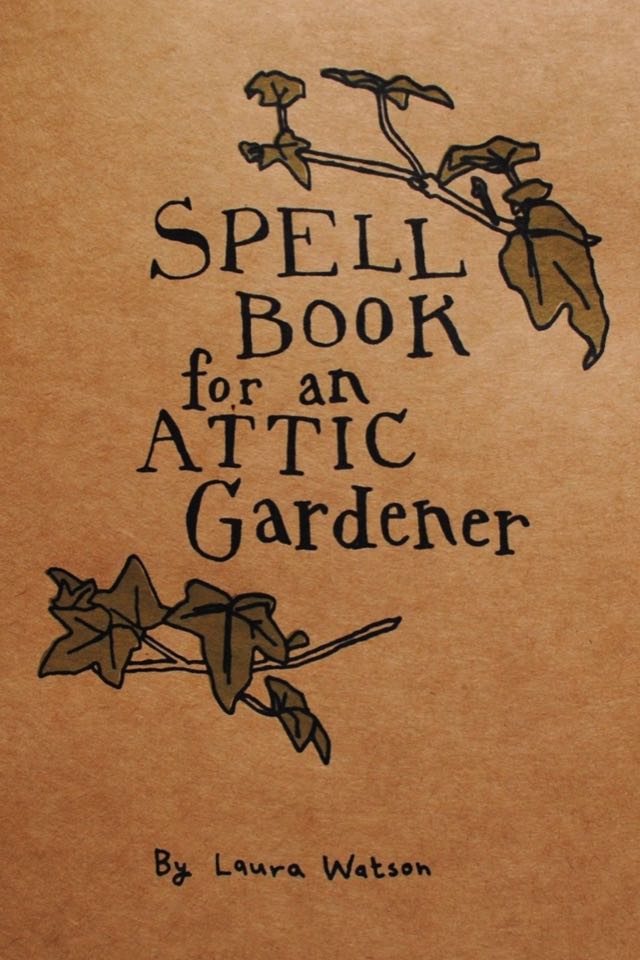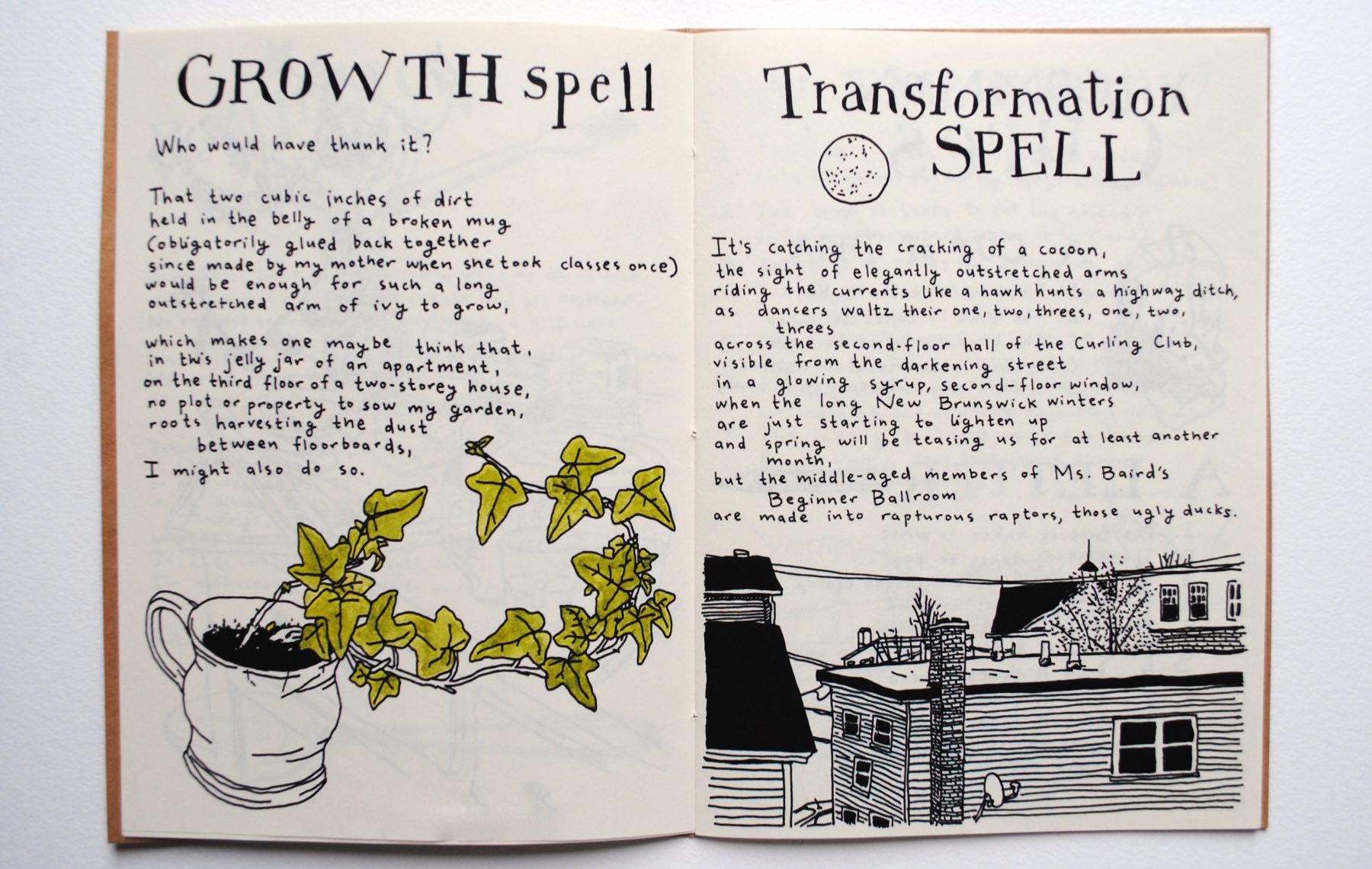Spell Book for an Attic Gardener
— Terry Abrahams
‘Spell casting level: beginner’ welcomes the reader into the quiet, familiar space of this chapbook. Laura K. Watson’s simple ink and watercolour illustrations stand out against cream-coloured pages, though the only colours that shine through are various shades of green. One might think of old reference books, complete with colour plates and vellum or parchment paper, a soft sort of nostalgia that comes with the known but unknown energy of a vintage text. Watson’s love for her illustrated subjects shines through, too—every line has its place.

The same goes for her writing—it all needs to be there. These poems need nothing added nor subtracted; they simply need to be. In this, I think, is a kind of magic. Writing and, subsequently, reading, are as necessary for making magic as anything else. Illustration, too, can be added to the mix to make the spell all the more powerful. Describing, depicting—an act of bringing something together and making it a real object, something like this book, that one can hold and flip through and enjoy and be influenced by, is, of course, an example of magic itself.
In this way, Watson’s approach to poetry here is physical. Each poem-spell contains within it objects, places, people, animals, that are inherently real. There isn’t much metaphor, no purple prose—the real is what is magical, and what is magical is made all the more real. These poems have a weight, akin to a pot filled with fresh dirt or a glass of water. ‘Rooting Spell’ in particular draws the reader in, utilizing repetition and lyrical language to tie together the physical, the emotional, and the essentially magical.

In something of a contrast, ‘Participation Spell for the Pigeons’ reads as a triptych: it is both poetry, spell, and journal entry. There is a touch of the personal in every poem therein that draws together the whole chapbook in something akin to a narrative. I often felt as if I were in the same room, the pivotal attic, as Watson while reading. While some poems read more like poems than others, those that read as journal entries feel less like something you might find on a scrap of old paper in a polished oak chest and more like something an old friend is reading aloud to you from their grandmother’s diary.

Watson’s work is as comforting as it is calming, an effortless Sunday afternoon sort-of short read that will most definitely inspire its reader to get their hands on something green. If you are, however, not one with a green thumb, clambering into a roadside ditch, taking a trip the cemetery, or communing with pigeons seem to be some of Watson’s many inspirations. Hopefully their magic will work on you, too.